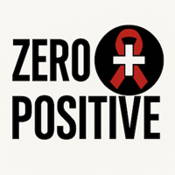
Overview
Synopsis
Zero Positive centers on Jim Himmer, a gay man in New York City who has recently tested positive for HIV. The play follows Jim as he grapples with his diagnosis, swinging between denial, anger, and moments of dark humor while navigating both the physical and emotional toll of the disease. Around him, friends and lovers attempt to provide comfort and stability, but their interactions often reveal as much about their own fears and fragility as about Jim’s condition. With biting wit and surreal touches, Kondoleon captures the absurdity, desperation, and strange comedy of a generation confronting an epidemic that upended lives and reshaped communities.
As Jim’s story unfolds, his relationships are tested under the pressure of his illness. Some friendships fray, others deepen through shared vulnerability, and his romantic connections become mirrors of both love and fear. Kondoleon resists sentimentality, instead blending piercing tragedy with bursts of satirical humor to reflect the unpredictable rhythms of living with HIV/AIDS in the 1980s. Through Jim Himmer’s journey, Zero Positive offers a searing portrait of mortality, resilience, and the ways people search for connection and meaning in the face of devastating circumstances.
Show Information
Context
Harry Kondoleon wrote *Zero Positive *in 1988, during the height of the AIDS crisis in the United States. At the time, theatre was one of the most powerful platforms for addressing the epidemic, particularly within the gay community, which was disproportionately affected. Kondoleon, himself a gay playwright living with HIV, infused the play with both a personal urgency and a satirical edge that reflected the chaos, grief, and absurdity of the era. Unlike some contemporaneous AIDS dramas that
to read the context for Zero Positive and to unlock other amazing theatre resources!Plot
Characters
| Name | Part Size | Gender | Vocal Part |
|---|---|---|---|
|
Lead |
Male |
Non-singer |
|
|
Supporting |
Not Specified |
Non-singer |
|
|
Featured |
Not Specified |
Non-singer |
|
|
Featured |
Not Specified |
Non-singer |
|
|
Ensemble |
Not Specified |
Non-singer |
Songs
A song with an asterisk (*) before the title indicates a dance number; a character listed in a song with an asterisk (*) by the character's name indicates that the character exclusively serves as a dancer in this song, which is sung by other characters.
Monologues
Scenes
Key Terms
Absurdism is a 20th-century theatrical style that reflects the belief that life lacks inherent meaning. Playwrights such as Samuel Beckett and Eugène Ionesco used illogical dialogue, repetition, and surreal situations. The genre emphasizes the futility of human struggle and the breakdown of communication.
Catharsis is the emotional release experienced by the audience at the conclusion of a tragedy or intense dramatic work. It allows viewers to purge feelings of fear, pity, or tension through the resolution of the play’s conflict. The concept dates back to Aristotle, who believed catharsis was central to the purpose of theatre.
A genre that combines elements of humor and morbidity, exploring serious themes through satire or irony.
The imaginary wall separating the audience from the actors onstage, often 'broken' for direct address. This term plays a vital role in understanding theatrical structure and is commonly encountered in stagecraft or performance settings.
A theatrical movement that strives to depict everyday life and authentic behavior on stage. It often focuses on domestic settings and psychological depth.
A 20th-century artistic movement that sought to release the creative potential of the unconscious mind, often manifesting in dreamlike or illogical theatrical elements.
A Tragedy is a form of drama that explores human suffering, conflict, and loss, often leading to a disastrous or fatal conclusion. Traditionally, the main character experiences downfall due to a personal flaw, poor judgment, or forces beyond their control. Tragedy aims to evoke pity and fear in the audience, leading to reflection and emotional release.
Videos
Sorry! We do not currently have videos for this guide.
Quizzes
Sorry! We do not currently have quizzes for this guide.
Themes, Symbols & Motifs
Themes
Illness and Mortality
At its core, Zero
to read about the themes, symbols and motifs from Zero Positive and to unlock other amazing theatre resources!Quote Analysis
Sorry! We do not currently have learning modules for this guide.
